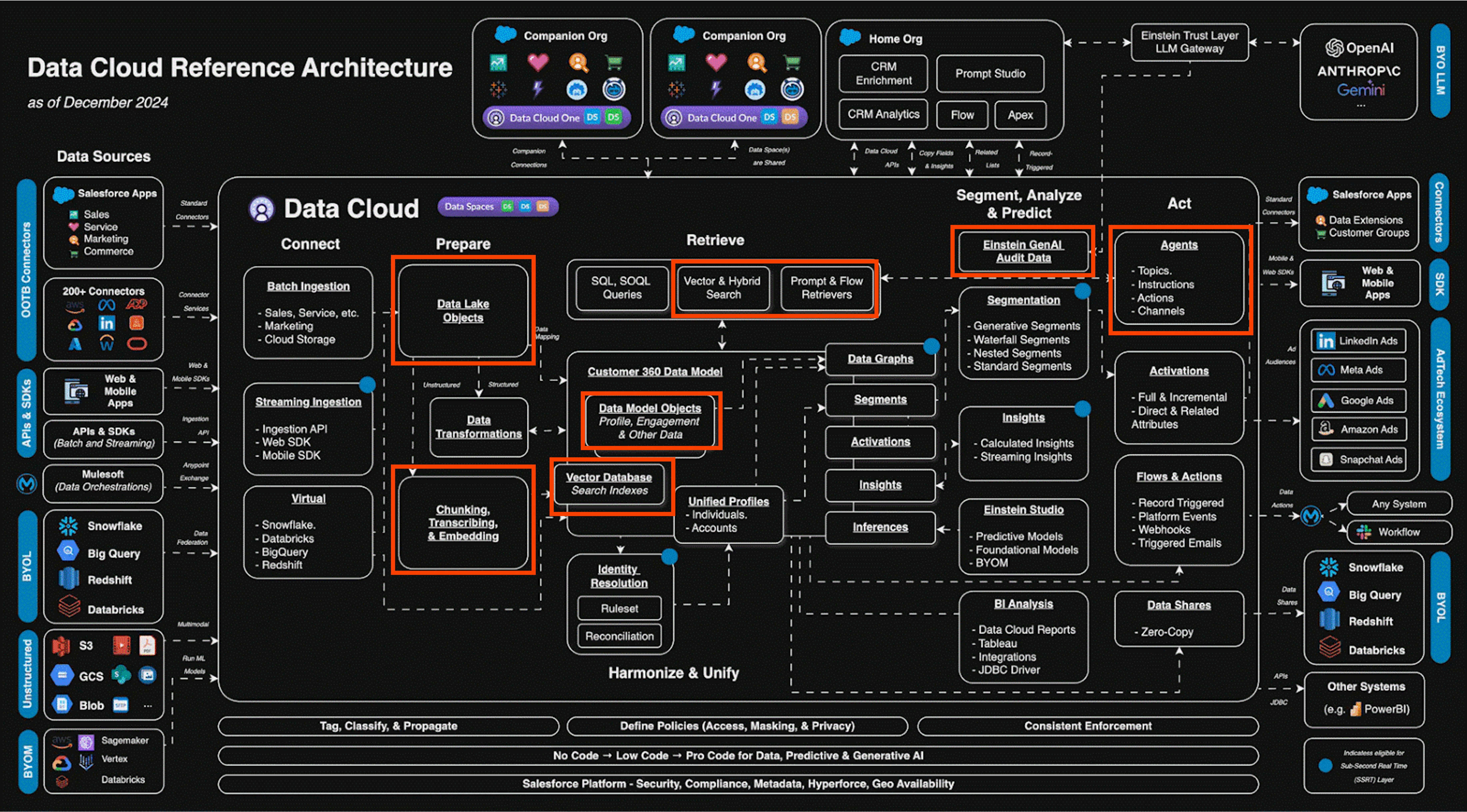
The relationship between Salesforce's Data Cloud and Agentforce has been a source of confusion in the market, with conflicting information about their interdependence. Let's clarify this critical integration and its implications for enterprise AI implementation.
"Contrary to some misinformation circulating, elements of Data Cloud are indeed required for Agentforce to do almost anything meaningful."
The Technical Foundation
To understand why Data Cloud integration is essential, we need to examine how modern Large Language Models (LLMs) process and retrieve information. LLMs rely heavily on vector databases for efficient information retrieval, and Salesforce has strategically leveraged its existing Data Cloud vector database infrastructure to power Agentforce.
Vector Database Integration
Large Language Models require sophisticated data structures to process semantic relationships between information. Vector databases excel at this task by converting text and data into mathematical representations that AI models can efficiently query and understand.
How the Integration Works
Salesforce has designed a seamless integration between Data Cloud and Agentforce through several key components:
- Data Libraries: Map vector databases to specific Salesforce records and objects
- Data Retrievers: Process and chunk information for semantic relevance
- Trust Layer Integration: Automatically incorporate Data Cloud elements into Agentforce security
- Automatic Setup: No manual implementation required for basic functionality
Seamless Implementation
One of the most significant advantages of this integration is its transparency to end users. When organizations implement Agentforce, the required Data Cloud elements are automatically configured as part of the trust layer setup. This approach eliminates the complexity typically associated with enterprise AI deployments.
Licensing and Allocations
Salesforce has structured the licensing to support this integration effectively:
- Required Data Cloud functions are included with Agentforce licensing
- Generous allocation of data retrievals included by default
- No separate Data Cloud license required for basic Agentforce functionality
- Automatic scaling based on usage patterns
Enterprise Implications
This tight integration between Data Cloud and Agentforce has several important implications for enterprise AI strategy:
Simplified Architecture
Organizations no longer need to manage separate vector database solutions or worry about complex integration challenges. The unified approach reduces technical complexity and accelerates deployment timelines.
Enhanced Performance
By leveraging Data Cloud's mature vector database capabilities, Agentforce can deliver more accurate and contextually relevant responses, particularly when working with organization-specific data and processes.
Scalability and Reliability
The integrated approach benefits from Salesforce's enterprise-grade infrastructure, ensuring that AI capabilities can scale with organizational growth while maintaining reliability and security standards.

Best Practices for Implementation
Based on Synaptic's experience implementing these integrated solutions, several best practices emerge:
- Data Quality Focus: Ensure your Salesforce data is clean and well-structured before Agentforce deployment
- Security Considerations: Review Data Cloud access controls as part of your Agentforce security model
- Performance Monitoring: Track data retrieval patterns to optimize for your specific use cases
- Training and Adoption: Prepare your team to understand the integrated architecture for better troubleshooting and optimization
Looking Forward
The integration between Data Cloud and Agentforce represents a mature approach to enterprise AI that addresses many of the traditional challenges organizations face when implementing AI solutions. By providing a unified platform that handles both data processing and AI capabilities, Salesforce has created a foundation for sustainable AI transformation.
As organizations continue to explore AI implementation, understanding this fundamental integration becomes crucial for making informed decisions about platform selection, resource allocation, and long-term AI strategy.
